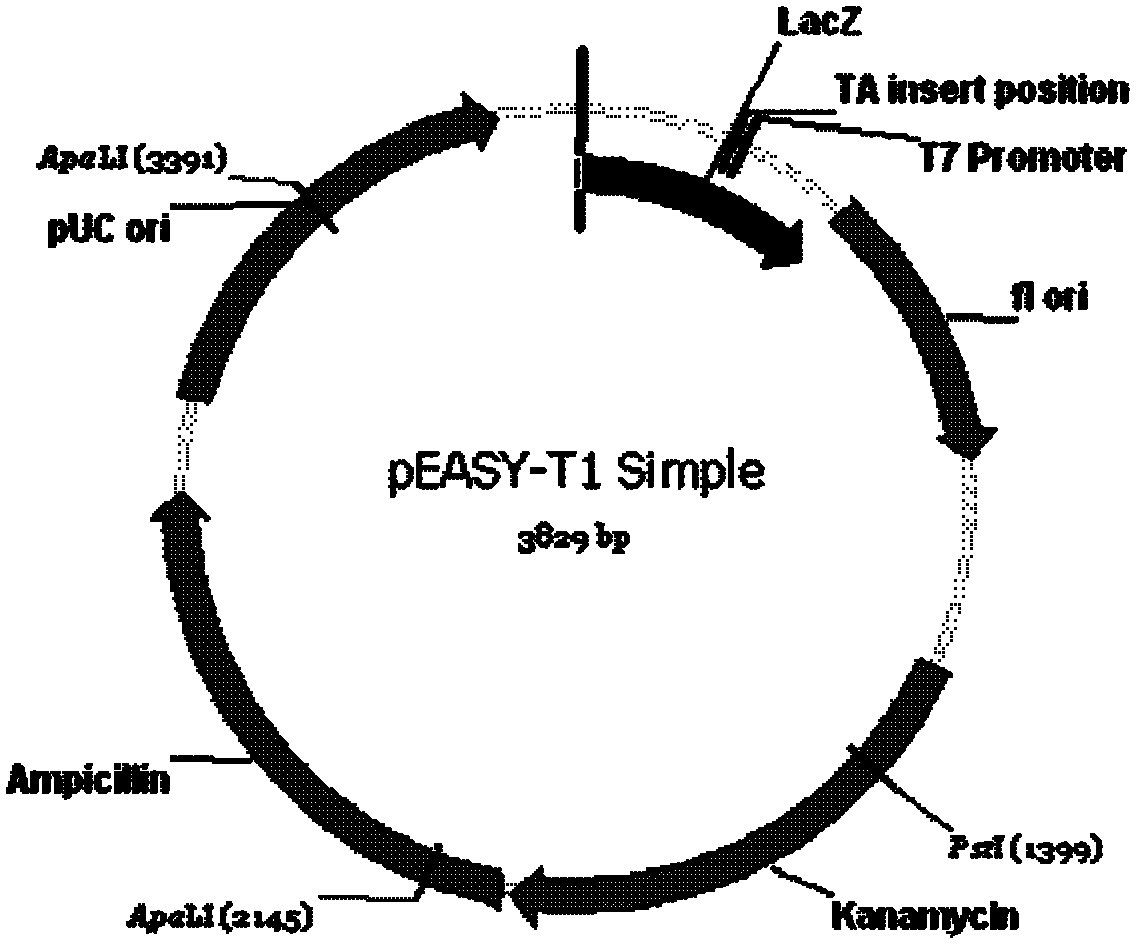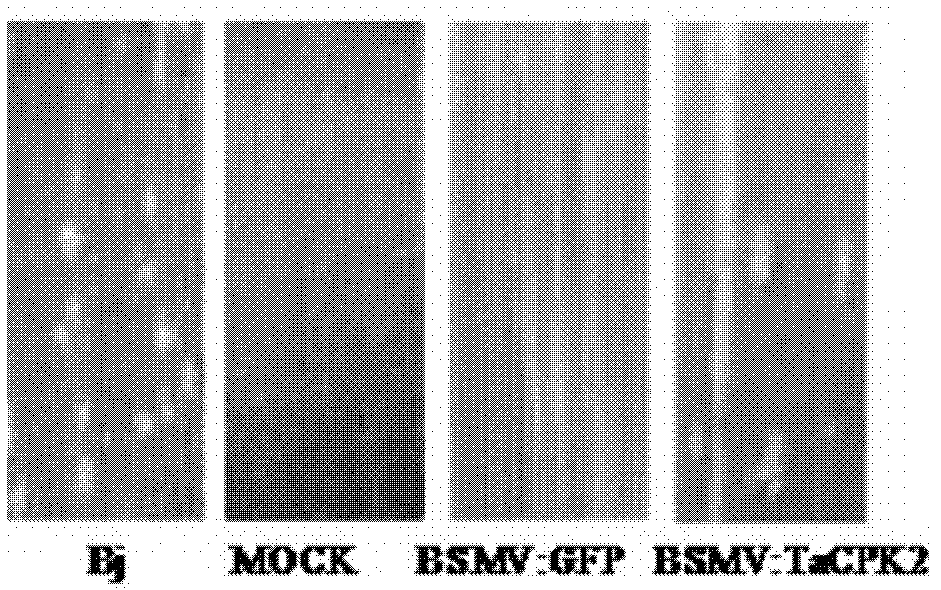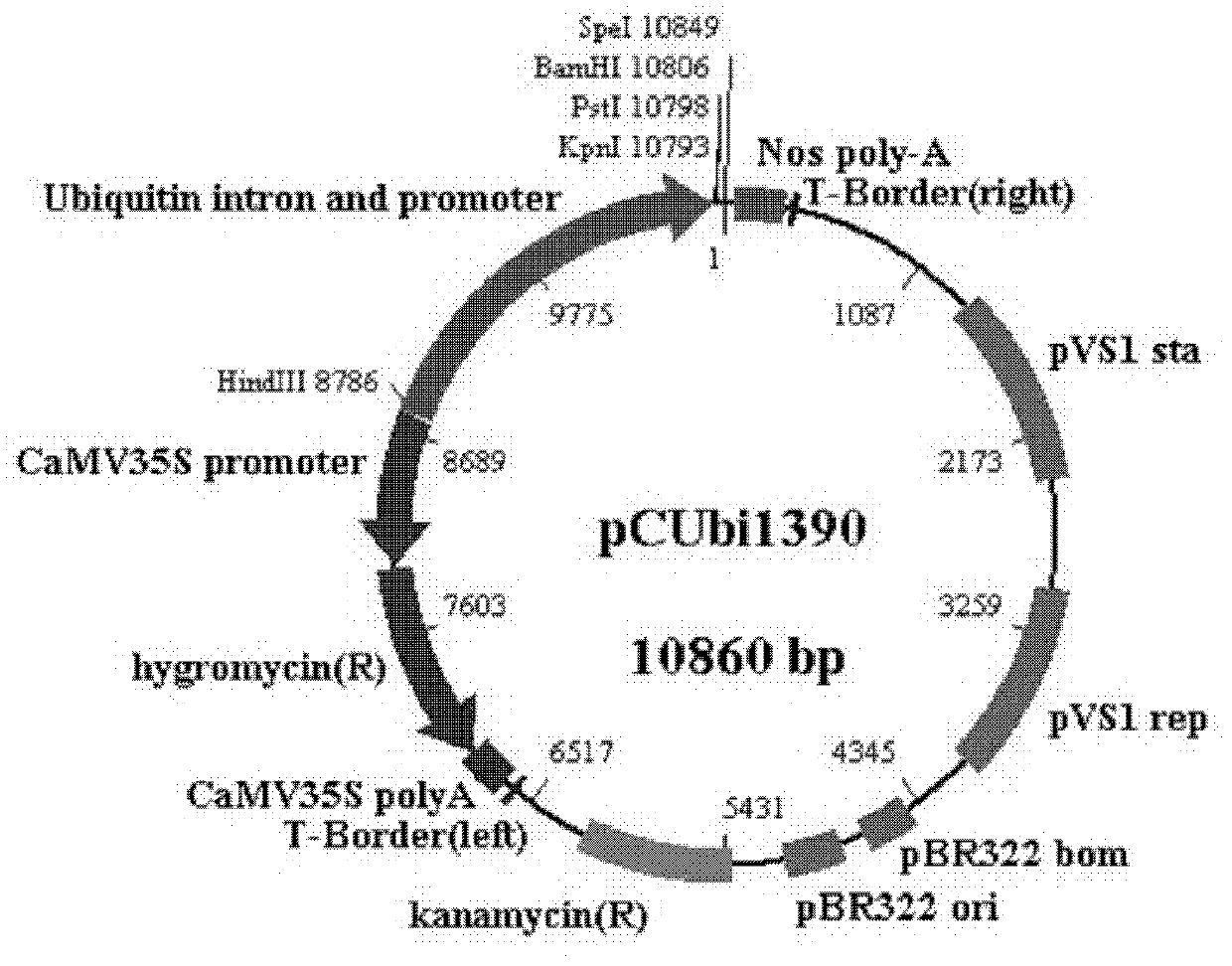Application of wheat TaCPK2 protein in plant disease-resistant breeding
A technology of wheat and protein, applied in the field of genetic engineering, can solve the problem that the biological function of TaCPK2 is not clearly explained, and achieve the effect of increasing resistance
- Summary
- Abstract
- Description
- Claims
- Application Information
AI Technical Summary
Problems solved by technology
Method used
Image
Examples
Embodiment 1
[0024] Example 1 Cloning of full-length gene of wheat calcium-dependent protein kinase TaCPK2
[0025] Use primers with restriction enzyme sites, forward primer GCAT ATGGGCAACGCATGCGGCGGT (as shown in SEQ ID No.4) and reverse primer GCAT CTAGATTGCACCAGGTGCGTC (as shown in SEQ ID No.5) clones the coding region sequence of TaCPK2 gene from the cDNA of Chinese spring wheat (Triticum aestivum L.) leaf;
[0026] PCR program: 94°C, 5 minutes; 94°C, 30 seconds; 55°C, 30 seconds; 72°C, 90 seconds; repeat 35 times; 72°C, 10 minutes.
[0027] PCR system: 2×EasyTaq PCR SuperMix (Quanshijin Company) 25μl;
[0028] Forward primer (10μM) 2μl;
[0029] Reverse primer (10μM) 2μl;
[0030] DNA template 5μl;
[0031] Double distilled water to make up 50μl.
[0032] After the PCR product was gel-cut, recovered and purified, it was cloned and connected to the pEASY-T1 Simple vector ( figure 1 ), the ligation product was transformed into Escherichia coli DH5α, and multiplied therein, and ...
Embodiment 2
[0033] Embodiment 2: Structural analysis of protein encoded by wheat calcium-dependent protein kinase gene TaCPK2
[0034] The structural analysis of the protein encoded by the wheat calcium-dependent protein kinase gene TaCPK2 showed that the protein encoded by this gene has the same conserved enzyme active site and structural domain as the CDPK protein domain in other plants. Phylogenetic analysis showed that the protein encoded by wheat TaCPK2 gene had the highest similarity with HvCDPK4 protein in barley, which was 95.9%. HvCDPK4 induces the spread of mesophyll cell death, which is not conducive to the invasion of fungi, and plays a role in resisting the invasion of powdery mildew. Therefore, the wheat TaCPK2 gene and the HvCDPK4 gene in barley have similar functions in resisting the invasion of powdery mildew.
Embodiment 3
[0035] Embodiment 3: VIGS vector and VIGS plant of wheat calcium-dependent protein kinase gene TaCPK2
[0036] Use primers with restriction enzyme sites, forward primers TGTCCTTTGATGGGCAACGCA (as shown in SEQ ID No.6) and reverse primer CCGCGTGGCCGTCCGTCTT (as shown in SEQ ID No.7) was amplified by PCR from the cDNA of Chinese spring wheat (Triticum aestivum L.) leaves, PCR program: 94°C, 5 minutes; 94°C, 30 seconds; 56°C, 30 seconds; 72°C, 30 seconds; repeat 35 times; 72°C, 10 minutes.
[0037]PCR system: 2×EasyTaq PCR SuperMix (Quanshijin Company) 25μl;
[0038] Forward primer (10μM) 2μl;
[0039] Reverse primer (10μM) 2μl;
[0040] DNA template 5μl;
[0041] Double distilled water to make up 50μl.
[0042] After the PCR products were gel-cut, recovered and purified, they were cloned and connected to the pEASY-T1 Simple vector ( figure 1 ), the ligation product was transformed into Escherichia coli DH5α, and multiplied therein, and the positive clone was sequenced a...
PUM
 Login to View More
Login to View More Abstract
Description
Claims
Application Information
 Login to View More
Login to View More - R&D
- Intellectual Property
- Life Sciences
- Materials
- Tech Scout
- Unparalleled Data Quality
- Higher Quality Content
- 60% Fewer Hallucinations
Browse by: Latest US Patents, China's latest patents, Technical Efficacy Thesaurus, Application Domain, Technology Topic, Popular Technical Reports.
© 2025 PatSnap. All rights reserved.Legal|Privacy policy|Modern Slavery Act Transparency Statement|Sitemap|About US| Contact US: help@patsnap.com



